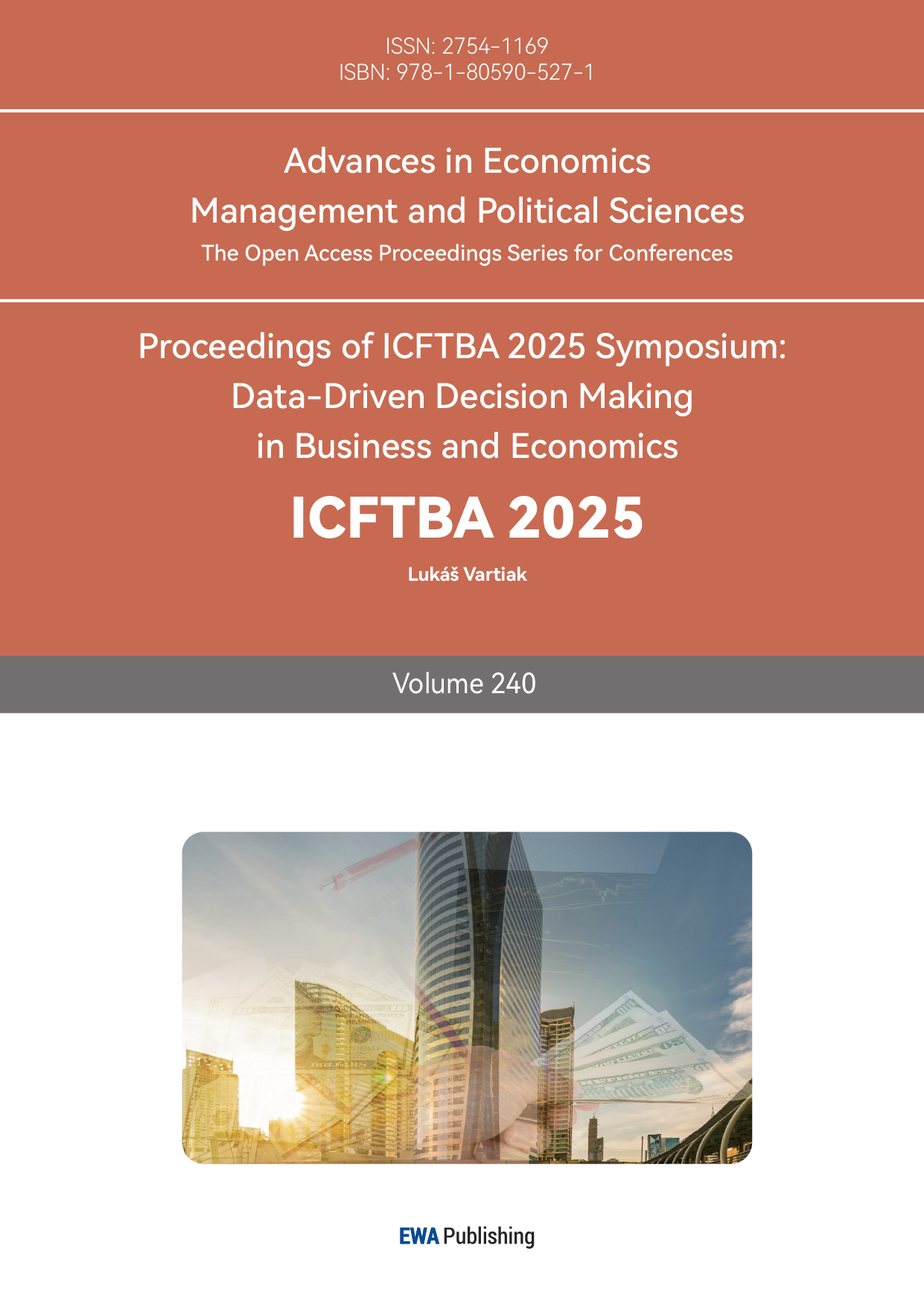References
[1]. Haugh, T. (2017), Nudging Corporate Compliance. Am Bus Law J, 54: 683-741. https: //doi.org/10.1111/ablj.12109
[2]. Thaler, R. H., & Sunstein, C. R. (2008). Nudge: Improving decisions about health, wealth, and happiness. Yale University Press.
[3]. Tversky, A., & Kahneman, D. (1974). Judgment under uncertainty: Heuristics and biases. Science, 185(4157), 1124–1131. https: //doi.org/10.1126/science.185.4157.1124
[4]. Cialdini, R. B. (2009). Influence: Science and practice (5th ed.). Pearson.
[5]. Digital Services Act. (2022). Regulation (EU) 2022/2065 of the European Parliament and of the Council. Official Journal of the European Union, L277, 1–102.
[6]. National Bureau of Statistics of China. (2023). Statistical communique on the national economy and social development. http: //www.stats.gov.cn
[7]. Weinmann, M., Schneider, C., & vom Brocke, J. (2023). Digital nudging: Steering users’ decisions in digital environments. Business & Information Systems Engineering, 65(1), 3–15. https: //doi.org/10.1007/s12599-022-00793-9
[8]. Kahneman, D. (2011). Thinking, fast and slow. Farrar, Straus and Giroux.
[9]. Cialdini, R. B. (1984). Influence: The psychology of persuasion. HarperCollins.
[10]. Thaler, R. H. (1985). Mental accounting and consumer choice. Marketing Science, 4(3), 199–214. https: //doi.org/10.1287/mksc.4.3.199
[11]. Ainslie, G. (1975). Specious reward: A behavioral theory of impulsiveness and impulse control. Psychological Bulletin, 82(4), 463–496. https: //doi.org/10.1037/h0076860
[12]. Meske, C., & Potthoff, T. (2022). Nudging users towards better decisions: Meta-analysis of digital social proof. Computers in Human Behavior, 135, Article 107373. https: //doi.org/10.1016/j.chb.2022.107373
[13]. Rosenblat, A. (2018). Uberland: How algorithms are rewriting the rules of work. University of California Press.
[14]. Heliyon. (2023). Meta-analysis on urgency-based nudges in digital commerce. Heliyon, 9(2), Article e13645.
[15]. Mullainathan, S., & Shafir, E. (2013). Scarcity: Why having too little means so much. Times Books.
[16]. Miao, L., Mattila, A. S., & Mount, D. (2023). Time pressure and decision-making in online retail. Journal of Retailing and Consumer Services, 74, Article 103451. https: //doi.org/10.1016/j.jretconser.2023.103451
[17]. Qu, Y., Khan, J., Su, Y., Tong, J., & Zhao, S. (2023). Impulse buying tendency in live-stream commerce: The role of viewing frequency and anticipated emotions influencing scarcity-induced purchase decision. Journal of Retailing and Consumer Services, 75, Article 103534. https: //doi.org/10.1016/j.jretconser.2023.103534 LiUC Primo+6ResearchGate+6eduvest.greenvest.co.id+6
[18]. Barton, R. (2022). Scarcity tactics in marketing: A meta analysis of product scarcity effects on consumer purchase intentions. Journal of Consumer Research, 49(3), 512–529. https: //doi.org/10.1093/jcr/ucab046 Wiley Online Library+7IDEAS/RePEc+7Monash Research+7
[19]. Muchnik, L., Aral, S., & Taylor, S. J. (2013). Social influence bias: A randomized experiment. Science, 341(6146), 647–651. https: //doi.org/10.1126/science.1240466
[20]. DelVecchio, D., Krishnan, H. S., & Smith, D. C. (2007). Cents or percent? The effects of promotion framing on price expectations and choice. Journal of Marketing, 71(3), 158–170. https: //doi.org/10.1509/jmkg.71.3.158
[21]. Chen, S., Monroe, K. B., & Lou, Y. (1998). The effects of framing price promotion messages on consumers’ perceptions and purchase intentions. Journal of Retailing, 74(3), 353–372. https: //doi.org/10.1016/S0022-4359(99)80100-6
[22]. Kahneman, D. (1973). Attention and effort. Prentice Hall.
[23]. Simon, H. A. (1955). A behavioral model of rational choice. Quarterly Journal of Economics, 69(1), 99–118. https: //doi.org/10.2307/1884852
[24]. Bettman, J. R., Luce, M. F., & Payne, J. W. (1998). Constructive consumer choice processes. Journal of Consumer Research, 25(3), 187–217. https: //doi.org/10.1086/209535
[25]. Iyengar, S. S., & Lepper, M. R. (2000). When choice is demotivating: Can one desire too much of a good thing? Journal of Personality and Social Psychology, 79(6), 995–1006. https: //doi.org/10.1037/0022-3514.79.6.995



